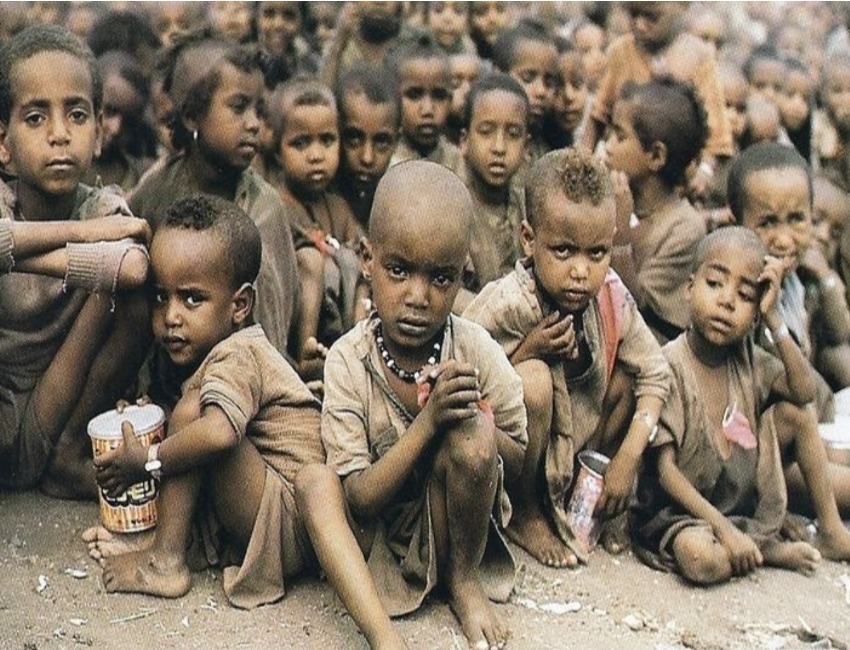By Akanimo Sampson
As many as 100,000 children die every year in Nigeria, the largest oil and gas producer in Africa due to Severe Acute Malnutrition (SAM), or extremely low weight-for-height, which also affects one million other children under age five.
Crude oil from the delta basin comes in two types: light, and comparatively heavy – the lighter around 36 gravity and the heavier, 20–25 gravity. Both types are paraffinic and low in sulfur
Government revenues, however, increased to N1.02 trillion in the third quarter of 2019 from N944.58 billion in the second quarter. Government revenues averaged N843.92 billion from 2010 until 2019, reaching an all-time high of N1.14 trillion in the fourth quarter of 2018 and a record low of N498.54 billion in the second quarter of 2015.
Though a Community-based Management of Acute Malnutrition (CMAM), a proven intervention for treating SAM, was launched in 11 northern states, the treatment is estimated to cover only 15-25% of the national burden of SAM each year.
The CMAM approach trains community volunteers to identify and initiate treatment for children with acute malnutrition before they become seriously ill. In this model, community volunteers screen children for SAM.
Those who are deemed to be severely malnourished are given calorie- and nutrient-dense Ready-to-Use-Therapeutic Foods (RUTF) weekly for four to eight weeks until the normal nutritional status is restored. The subset of children suffering from additional serious medical complications is referred to as hospital care.
The CMAM programme in Nigeria is expected to have a large impact in a highly cost-effective manner. It will create one of the largest CMAM programmes in the world, creating one million Nigerian children with SAM and saving an estimated 95,000 lives in half a decade.
But, the true cost of CMAM in Nigeria is not yet known, and there is an urgent need to measure these costs and program impacts and to calculate the resulting cost-effectiveness.
The Children’s Investment Fund Foundation (CIFF) was funding the expansion of CMAM in 11 northern states. To complement its effort, CIFF asked Results for Development (R4D) to perform prospective cost data collection to validate the ex-ante estimates of the programme’s cost-effectiveness and to ensure that financial support to sustain the programme.
By providing insight into both of these areas, R4D contributed to the global evidence base on the cost-effectiveness of routine CMAMs. CMAM has proved its worth in emergency situations, but has only begun to be applied in routine circumstances of chronic malnutrition, and provide useful inputs into discussions between the Federal Government and external donors on how to sustainably finance and scale the program.
The work complemented R4D’s ongoing work in Nigeria in support of the Saving One Million Lives initiative, in collaboration with the Federal Ministry of Health, UNICEF, Action Contre la Faim, Valid, and Save the Children.
R4D is, however, working with change agents around the globe to create self-sustaining systems that support healthy, educated people.
The Saving One Million Lives (SOML) initiative is a broad-based investment programme with six distinct health pillars – immunisation, malaria control, nutrition, prevention of mother to child transmission of HIV, delivery of essential medicines to address common childhood illnesses, and strengthening of MCH delivery platforms.
SOML has the potential to dramatically improve maternal and child health in the country.
Sustainable methods for financing programme scale-up in Nigeria must be identified in order to unlock the promise of SOML. If the initiative is to accomplish its intended aim, it must have the resources to execute its programs both now and in the future.
With its strong record of health financing analysis, R4D is well-equipped to lead an evaluation of the financial sustainability of SOML. This analysis, to be carried out in partnership with the federal health ministry and with the support of CIFF, is helping to stimulate discussions among government officials and domestic and international development partners on ways to mobilise adequate funding for SOML and ensure that the money which is raised is used in an efficient manner to maximise the gains in child and maternal health.
R4D was asked by the SOML Programme Delivery Unit of the health ministry to validate cost estimates, analyse current and potential sources of financing, build alternative scenarios for strategic planning purposes, and draft recommendations on the most promising avenues for generating additional fiscal space.
R4D developed three future scenarios or forecasts, built on optimistic, pessimistic, and medium projections of donor and federal government financing. The analysis focused on how domestic and external financing can be leveraged to expand the financial envelope for the SOML pillars.
R4D also explored options for closing the gaps between the projected costs and estimated available financing for particular pillars. Building on previous fiscal space analysis work for GAVI on immunisation, R4D is deepening its involvement in the health sector of Nigeria through this project.
The SOML initiative could lead to large health improvements in the short term, and could also catalyze larger gains by drawing attention to important under-funded areas of health, such as nutrition and essential medicines.
Its analysis suggested that modest increases in federal health spending, along with some reallocation toward the highly cost-effective SOML interventions, could make a substantial contribution to meeting SOML’s resource needs. If adopted, these and other feasible options explored in the analysis can help increase the number of mothers and children’s lives saved and establish a sustainable funding architecture for the future.

